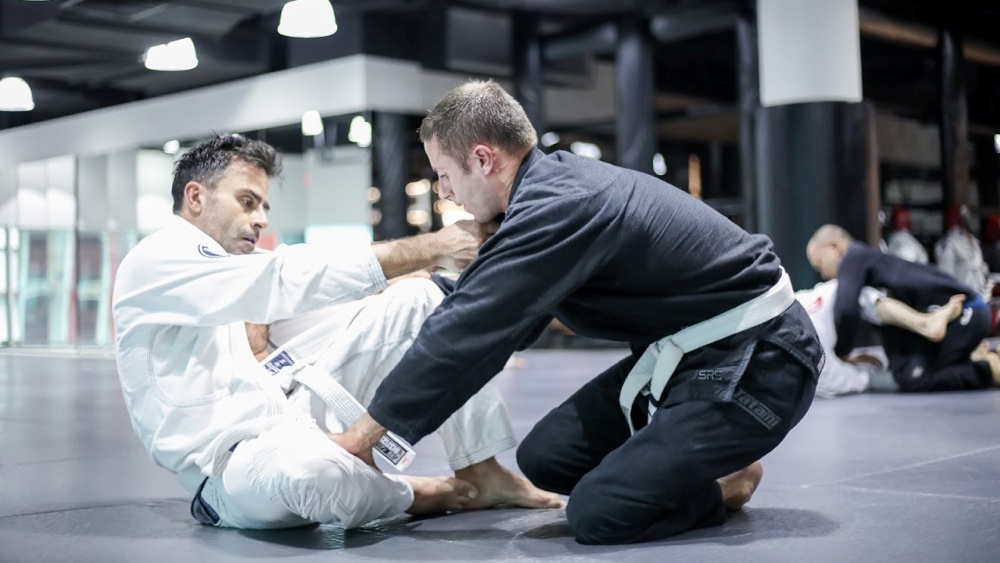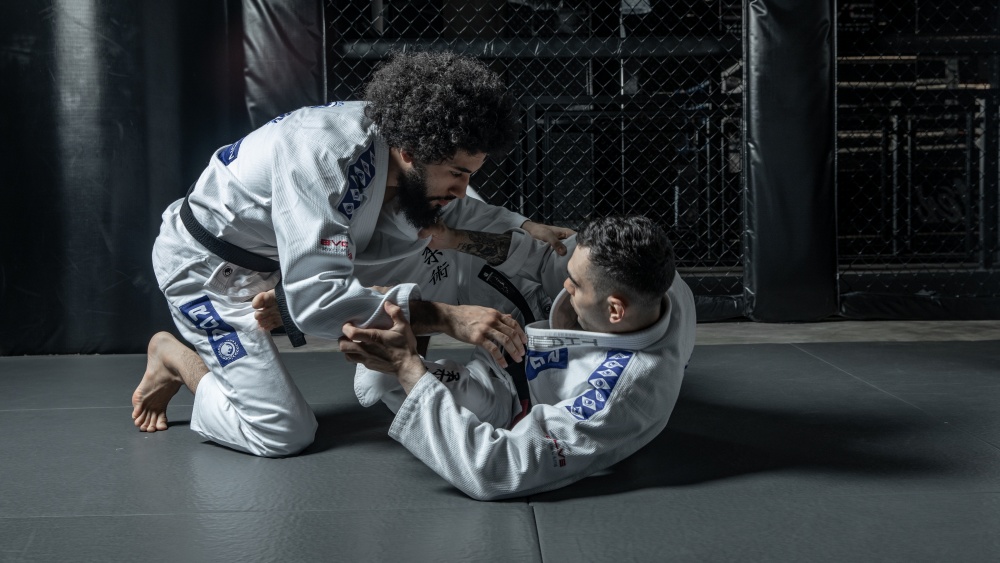BJJ is widely known for its techniques that help people fight or defend against an opponent in a supine or seated position. It is hard to imagine BJJ without the closed guard, as it is a fundamental technique along with the idea of submissions that made it popular. Every time we leave the closed guard and stop wrapping our feet around the opponent’s body, it is the time where we are able to apply the open guard. In this article, we will talk about chaining the different types of open guards to help you achieve an impassable guard.
What Is An Open Guard In BJJ?

As mentioned earlier, an open guard is any type of guard where our feet are not wrapped around the opponent’s waist. An open guard can be performed by having contact with the opponent’s arms, legs, hips, ankle, foot, or sleeves and lapel when wearing a gi. It is important to control at least three of the aforementioned points of the opponent’s body to have an effective open guard for you to successfully apply kuzushi leading to submissions.
The most used open guards in BJJ are:
- Seated Open Guard
- De La Riva Guard
- Reverse De La Riva Guard
- Spider Guard
- Worm Guard
- Lasso Guard
- Butterfly Guard
- X-Guard
- Single Leg X-Guard
Each of these open guards will give you the opportunity to sweep and later on submit your opponents. Other than its rewarding nature, studying the open guard can be exciting as it opens you to a lot of possibilities as you chain each variation.
Chaining Your BJJ Open Guards
There are a lot of ways to chain your open guards. It is important to drill the different open guards for you to find what suits your game best. Some open guards may be done seated or in a supine position: as the famous Gordon Ryan said, where the seated guard ends is where the supine guard begins. Each variation can be chained successfully under certain circumstances, as each opponent reacts differently. Below are examples of ways on how you can chain your open guards.
1) Butterfly Guard To Single Leg X-Guard And X-Guard
In the video, Chewjitsu showed a typical way on how to chain the butterfly to single leg x-guard and x-guard. This is a basic way of using the butterfly guard to outbalance your opponent. First, connect the butterfly hooks and look for a way to get both of your arms gripping the upper body of your opponent, ideally a body lock, to pull his body close to you.
After successfully pulling your opponent, you will find yourself in a supine position and your opponent directly floating above you. When this happens, you may now remove one of your butterfly hooks and go for a single leg x-guard/ashi garami to sweep your opponent and start attacking the legs, or continue to x-guard.
2) Spider Guard To Lasso And Single Leg X-Guard
The spider guard partnered with the lasso is one of the best ways to control your opponent’s upper body in the gi. A key factor to a successful spider and lasso combo is to keep the leg performing the spider guard straightened. In the video, Aaron Benzrihem showed the technique with one foot performing a spider guard and his other foot performing a lasso to the other hand of his partner. As he pulled, his body ended in a supine position, with his partner standing directly above. He then removed the spider guard to apply the single leg x-guard while keeping the lasso and finished with a sweep.
3) Seated Open Guard To De La Riva Guard And X-Guard
The seated open guard is used as an initial position to integrate an open guard sequence. It is used to start and connect various open guards, which in this case, the De La Riva and x-guard. This sequence is performed initially with the seated open guard, as the opponent pushes forward to apply pressure. Go to a supine position to apply the De La Riva hook and your other extended foot on the back of the opponent’s knee. It is important to get this set up so you can easily push the opponent away and go to x-guard.
Open Guard Drill
This drill will require you to start and end from the half-guard. It will help you flow through various open guards, such as the reverse De La Riva, De La Riva, lasso, spider, single leg x-guard, and x-guard.
Initially, in this guard drill, you will start at the bottom half-guard with a knee shield and a lapel and sleeve control. As your partner kneels to perform a knee slice, it is time for you to switch your half-guard hook from the ankle and transition to reverse De La Riva while maintaining the lapel and sleeve control. Just as your partner reacts by standing up, respond by placing the reverse De La Riva hook and straightening your leg to the hip of your partner while your outside leg goes for a standard De La Riva.
The typical way to remove the De La Riva hooks is by stepping the hooked leg backward, assuming the hand of the opponent isn’t controlling your ankle. Once your opponent steps his leg backward, breaking your De La Riva hook, you may now apply the lasso together with the spider guard. As mentioned earlier, the spider guard can be utilized to apply kuzushi as it greatly limits the upper body movement of your opponent.
Use the spider guard to pull your partner above your hips to transition from spider to single leg x-guard. From the single leg x-guard, you can now move to modified x-guard or regular x-guard to sweep your partner. After sweeping your partner, it is now his turn to repeat the whole drill from the bottom half-guard.
Final Thoughts
As you gain more knowledge and experience in BJJ, it is important to explore other types of guards, such as the open guard. Learning it will help you understand attacks and defenses from such positions, making you hard to submit. This also gives you more possibilities to diversify your game and work on submissions like leg locks.
You may also like:

















